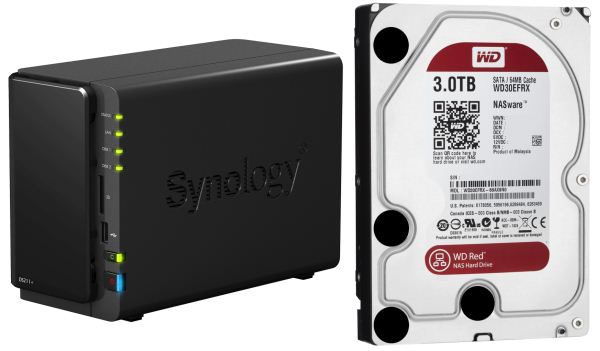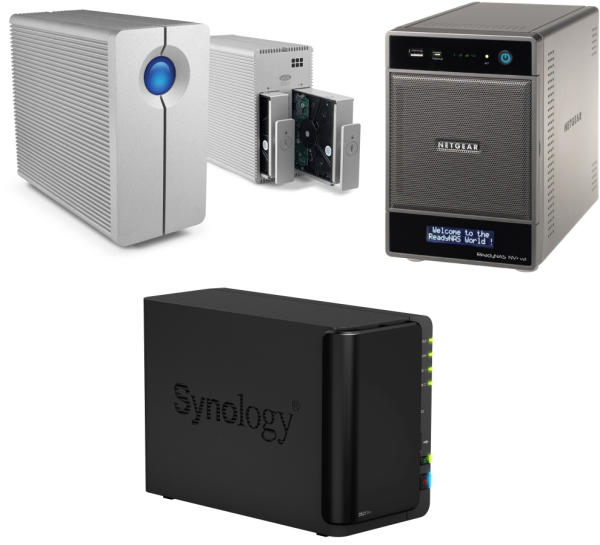Western Digital Red Review: Are NAS-optimized HDDs Worth the Premium?
by Ganesh T S on August 17, 2012 4:20 PM EST- Posted in
- Storage
- NAS
- Western Digital
Introduction and Testbed Setup
Western Digital (WD) introduced hard drives specifically targeted towards NAS systems under the Red branding last month. Jason had some initial coverage at launch time. WD claimed to have put in a number of firmware features and some additional hardware aspects in the Red lineup to make it suitable for NAS usage.
WD touted the following main points
- Less aggressive head parking (no IntelliPark feature)
- Configurable Time Limited Error Recovery (TLER), with a default of 7 seconds
- IntelliPower disk rotation speeds (comparable to Green drives)
- Vibration reduction mechanism in hardware
- 3-Yr. warranty and 24x7 phone support
In the next section, we will analyze each of these claims in detail. First, let us take a look at the testbeds. We used the WD Red drives standalone in a PC and also as part of a few SMB / SOHO NAS systems. Our standalone PC testbed was also used for some of the NAS testing. Our Summer 2012 NAS testbed's specifications are provided below:
| NAS Benchmarking Testbed Setup [ Summer 2012 ] | |
| Processor | Intel i7-3770K CPU - 4C/8T - 3.50GHz, 8MB Cache |
| Motherboard | Asus P8H77-M Pro |
| OS Hard Drive | Seagate Barracuda XT 2 TB |
| Secondary Drives | Western Digital Red WD30EFRX 3 TB |
| Corsair Performance 3 Series™ P3-128 128 GB SSD (Offline in Host OS) | |
| Memory | G.SKILL ECO Series 4GB (2 x 2GB) SDRAM DDR3 1333 (PC3 10666) F3-10666CL7D-4GBECO CAS 7-7-7-21 |
| PCI-E Slot | Quad-Port GbE Intel ESA-I340 |
| Case | Antec VERIS Fusion Remote Max |
| Power Supply | Antec TruePower New TP-550 550W |
| Host Operating System | Windows Server 2008 R2 Enterprise |
| . | |
A Windows 7 virtual machine was set up using Hyper-V with the following configuration
| Windows 7 Ultimate x64 : Guest OS | |
| Processor | Single Physical Core of Intel i7-3770K |
| OS Hard Drive | VHD File on Seagate Barracuda XT 2 TB |
| Secondary Hard Drive | Corsair Performance 3 Series™ P3-128 GB SSD |
| Memory | 1 GB |
The following NAS units were used for testing the WD Red drives in RAID-1 configuration.
- LaCie 2big NAS
- Netgear NV+ v2
- Synology DS211+
The drives were benchmarked against 2 x 3TB Seagate Barracuda 7200rpm drives that were bundled with the LaCie 2big NAS.
An important aspect of NAS systems that we haven't covered in detail is the effect of prolonged usage and how differently the NAS performs when it is close to full capacity. Towards this, we also used our build-in-progress NAS testbed to stress the WD Red drives in the Synology D211+. The details of this separate testbed and methodology are described in a later section.












87 Comments
View All Comments
bill.rookard - Friday, August 17, 2012 - link
I have to say, I've been running a 5 disk Raid5 using the WD Green 2TB's, and I had one die after 30 days (RMA'd and replaced no charge), but since then, been running it 24/7 since about 2009 as well. It's not an appliance NAS - it's a full size tower, AMD Phenom/Gigabyte board/5x2Tb WD drives running FreeNAS - and it's been (with the exception of the one failure) solid.When it does come around to start looking into replacements, the Red series will be worth looking at as well as I expect NAS systems to become more and more prevalent.
vgray35@hotmail.com - Saturday, August 18, 2012 - link
The GREEN drives are performing well for only one reason - they are not being subjected to extreme temp cycling. Constant temps increase hard drive life quite dramatically. That same drive would quickly die in a laptop that is not routinely monitored for operating temps, with cooling filters cleaned on a regular basis. Turning the laptop on and off regularly will kill a GREEN hard drive quickly.It is all about extremes of temp cycling. I would not risk keeping the GREEN drives, when you could upgrade to RED at a convenient point in time, rather than be subjected to recovering from an actual hard drive failure. It is quicker, simpler, and less painful to do it now before they fail. Running 3 years on GREEN is one very risky business.
Gr8Ape - Saturday, August 18, 2012 - link
i can not +1 this enough.dj christian - Tuesday, August 21, 2012 - link
Which i have done. Had no problems with the Green discs since i bought them and they've been running for 6 and 8-thousand hours respectively.pieterjan - Wednesday, September 26, 2012 - link
Aggressive head parking (5 seconds) probably adds to the quick failure. The wdidle3 tool lets you disable it, however. In fact, except for the anti vibration feature and 24/7 support (that doesn't exist outside the US), I see little difference between the red and green drives...Phynaz - Friday, August 17, 2012 - link
Pretty horrible article, charts are unreadable.Actual writing is difficult to read, please be more concise.
Oh and crap like "IT departments have been tempted to use consumer drives". Absolute bullshit. If the author has done this he should be fired from his job.
mwildtech - Friday, August 17, 2012 - link
Cut him a break man. If you don't like the article, then don't read it. Not bullshit on IT departments not tempted to use consumer drives. A ton on schools and S&L Gov IT Departments use consumer drives in their NAS devices. I know, because they buy them from me.Gigantopithecus - Friday, August 17, 2012 - link
Yet another useless comment from Phynass. The graphs are perfectly legible, the writing is fine, and if you've never seen an IT department use consumer drives, you've never worked with small businesses. Get a life you fucking nitwit.Azethoth - Friday, August 17, 2012 - link
RAID: Redundant Array of Inexpensive Disks.Gosh, am I doing something wrong using cheap drives in a RAID? Am I going to get fired?
Do you scream when you type, because I don't want cheetos sprayed all over me. Does your Mom mind when you throw tantrums in the basement?
PS: you need to just turn on caps lock and leave it on.
yyrkoon - Friday, August 17, 2012 - link
LOL cheetos . . .And yeah, I guess it was an accident that SAS controllers can interface with SATA drives . . .